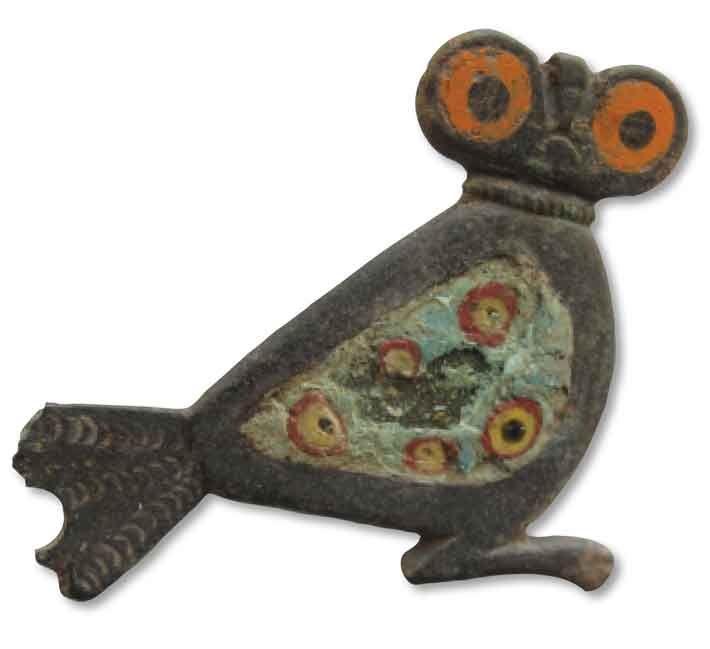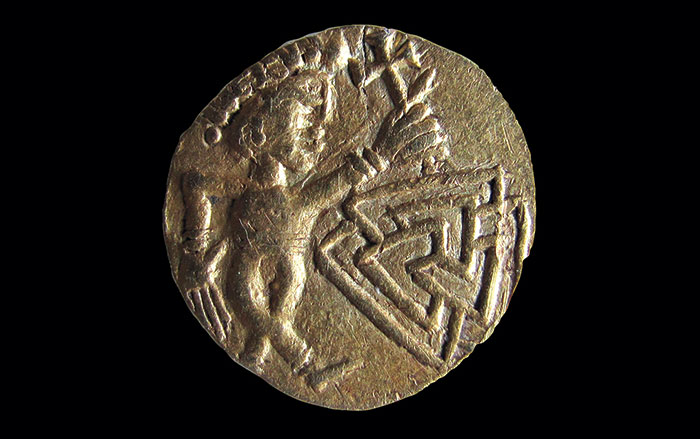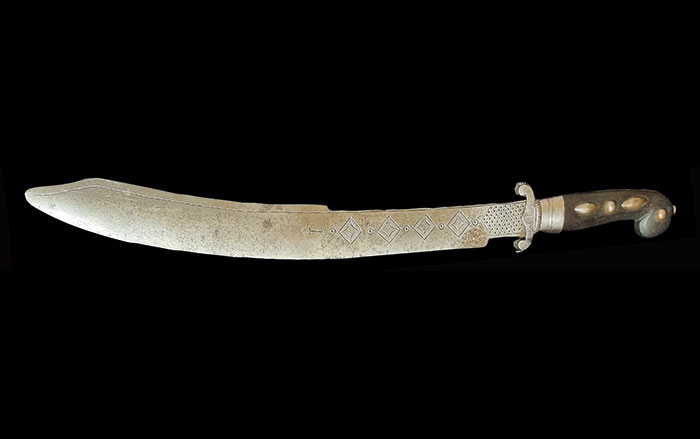
Danish archaeologists investigating the settlement of Lavegaard on the island of Bornholm have uncovered an unusual and exquisite owl-shaped fibula. The 1.5-by-1.5-inch Roman brooch, which dates to the first through third centuries A.D., was discovered by metal detectorists working with the Bornholm Museum. The bronze owl is inlaid with enamel disks and colored glass, which were used to create the enormous orange-and-black eyes. Decorative enameled fibulas are rare in such remote areas of northern Europe, with most concentrated in Roman frontier forts along the Danube or Rhine. This valuable personal item was likely brought back to Bornholm by a local mercenary who had served along the frontier, or was perhaps a gift from a wealthy Roman visiting the island.












